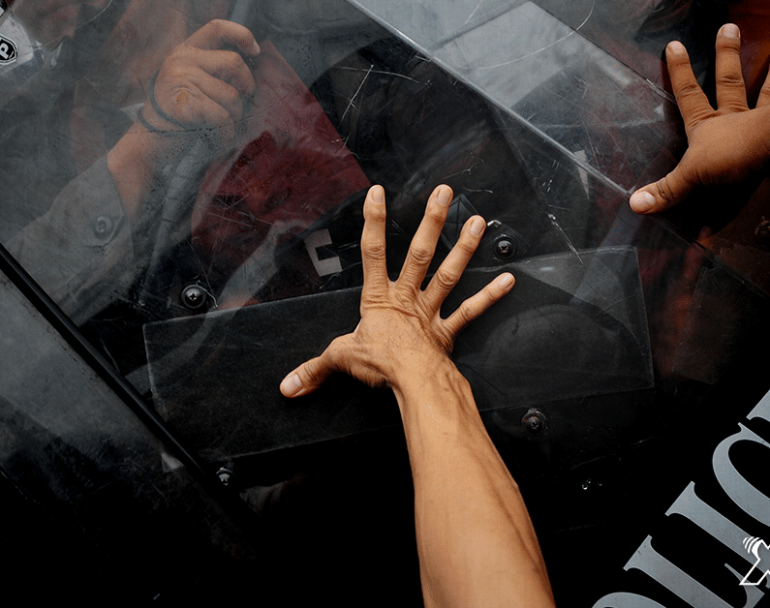
A New “Surge” Expands Unconstitutional Federal Involvement in Local Police
By: Mike Maharrey
WASHINGTON (Nov. 2, 2019) – Invoking military language used during the Iraq war, President Trump announced a national police “surge” to crack down on violent crime.
Trump announced the crime-fighting initiative during the International Association of Chiefs of Police conference in Chicago.
“In coming weeks, Attorney General Barr will announce a new crackdown on violent crime – which I think is so important – targeting gangs and drug traffickers in high crime cities and dangerous rural areas.”
“Let’s call it the surge,” Trump said, dusting off the term used when escalating troop deployments and initiating offensive actions during the Iraq war.
Trump did not offer details about the plan, but he promised it would be “very dramatic.”
The federal government does not have any constitutional authority to engage in local crime-fighting. During the ratification debates, numerous supporters of the Constitution insisted that police powers would remain exclusively with state and local governments.
But over the years, the feds have intertwined themselves more and more tightly with state and local law enforcement. In effect, today the U.S. government effectively directs a national police force with policies and priorities dictated by Washington D.C. State and local police operate at the behest of federal authorities, motivated by funds and equipment showered upon them by their Washington benefactors.
During his speech to police chiefs, Trump bragged about increasing the federal government’s unconstitutional police militarization scheme.
“To help keep you safe, I’ve made $600 million-worth of surplus military equipment available to local law enforcement. If you remember, the previous administration didn’t want to do that… They didn’t want to make you look so tough. They didn’t want to make you look like you’re a threat.”
Trump was referring to a 2017 executive order that gave a push to local police militarization. Trump’s action rescinded an Obama-era policy meant to provide greater transparency and oversight around the Department of Defense 1033 program and other federal resources that provide military weapons to local police.
The federal government has aggressively worked to arm local police through 1033 and other federal programs for years. Through these initiatives, local police departments procure military-grade weapons. Police can also get military equipment through the Department of Homeland Security via the (DHS) “Homeland Security Grant Program.” In 2013, DHS gave more than $900 million in counterterrorism funds to state and local police. According to a 2012 Senate report, this money has been used to purchase tactical vehicles, drones, and even tanks with little obvious benefit to public safety. And, according to ProPublica, “In 1994, the Justice Department and the Pentagon-funded a five-year program to adapt military security and surveillance technology for local police departments that they would otherwise not be able to afford.”
COMMAND AND CONTROL
Proponents of police militarization always talk about protecting police officers and the danger of terrorism. But the main function of local police militarization revolves around the unconstitutional “war on drugs.” After all, wars require soldiers, and the federal government doesn’t have the manpower to fight alone. The feds need state and local police to serve as foot-soldiers in their drug war. Militarization, combined with asset forfeiture cash, incentivizes the necessary cooperation.
In fact, a survey of applications made to federal programs by state and local law enforcement agencies revealed the drug war was by far the most common reason given for needing to militarize police officers.
Over the last two decades, police militarization has fundamentally changed policing.
Trump appears intent on continuing the evolution of local police into a domestic military force. This might throw red meat and “conservative” law and order types, but arming ‘peace officers’ like they’re ready to occupy an enemy city is totally contrary to the society envisioned by the founders. They’ve turned ‘protect and serve’ into ‘command and control.’
In the 1980s, the federal government began arming, funding and training local police forces, turning peace officers into soldiers to fight in its unconstitutional “War on Drugs.” The militarization went into hyper-drive after 9/11 when a second front opened up – the “War on Terror.”